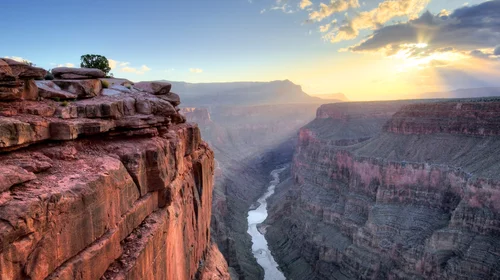The Grand Canyon. Its name alone conjures images of endless vistas, sculpted cliffs bathed in golden sunlight, and the raw power of nature laid bare. It’s a bucket-list destination, a natural wonder that draws millions of visitors each year. But like any tourist hotspot, timing your visit is crucial. Venture forth at the wrong time, and your awe-inspiring canyon trek could quickly become a sweat-soaked, crowd-dodging nightmare. So, before you book your flight and pack your hiking boots, let’s delve into the worst times to visit the Grand Canyon National Park and ensure your experience is truly grand, not grimy.
The Scorching Inferno: July and August
Arizona summers are no joke. The Grand Canyon, nestled in the heart of the state, transforms into a furnace during July and August. Temperatures regularly soar past 100°F (38°C), turning even the shortest stroll into a sunbaked struggle. Hike? More like heatstroke on a scenic backdrop.
The relentless heat isn’t just uncomfortable; it’s dangerous. Trail closures due to excessive heat warnings are common, and dehydration lurking around every corner.
But the misery doesn’t end with the thermometer. These peak months draw the biggest crowds of the year, transforming the canyon rim into a sardine can of sightseeing humanity. Queues for everything from restrooms to shuttles become an exercise in patience. Imagine vying for that perfect sunrise photo amongst a hundred selfie sticks instead of soaking in the majestic silence. No thanks.
Spring Break Blitz: March and April
Spring break might conjure images of beach vacations and carefree revelry, but at the Grand Canyon, it translates to another kind of pandemonium. School groups and families descend upon the park, bringing with them a surge in energy and, well, noise.
Expect bustling crowds, packed trails, and accommodation booked months in advance. While the weather is milder than summer, it’s still unpredictable, with frequent rain showers and mudslides that can dampen your hiking plans.
Remember, the Grand Canyon is a natural haven, not a spring break party zone. If you’re seeking serenity and solitude, give March and April a wide berth.
Holiday Hangover: December and Major Holidays
The Grand Canyon adorned in a snowy blanket might sound idyllic, but the reality is often less picturesque. The North Rim is completely closed during winter, and the South Rim can experience harsh blizzard-like conditions, making many trails and viewpoints inaccessible.
Even if the weather cooperates, the holiday spirit at the Grand Canyon can come with a hefty price tag. Lodging skyrockets, availability dwindles, and the festive cheer blends with the usual tourist throngs, creating a chaotic holiday cocktail.
If you’re dreaming of a white Christmas at the Grand Canyon, be prepared for potential closures, limited options, and a hefty bill.
Beyond the Crowds: Finding Your Grand Canyon Nirvana
Now, before you write off the Grand Canyon entirely, fear not! There are plenty of ways to experience its magic outside the “worst times.” Consider these alternatives:
- Shoulder Seasons: Spring (May-June) and fall (September-November) offer pleasant temperatures, smaller crowds, and stunning seasonal color palettes. Think blooming wildflowers in spring and fiery foliage in fall.
- Weekday Warrior: Weekends are peak time for both crowds and prices. Aim for weekdays, when the atmosphere is calmer and deals might be more plentiful.
- Sunrise Serenade: Rise before the crowds and be rewarded with a breathtaking sunrise over the canyon. The golden light paints the cliffs in shades of orange and pink, and the peace and quiet are unbeatable.
- Explore the Rim: Don’t limit yourself to the main viewpoints. Hike along the Rim Trail, a 13-mile path offering diverse perspectives and hidden gems.
- Venture Beyond: The Grand Canyon isn’t the only natural wonder in Arizona. Explore nearby attractions like Sedona’s red rock formations or Petrified Forest National Park’s ancient petrified wood.
Grand Canyon Culture and Logistics
No Grand Canyon trip is complete without experiencing the local culture. Immerse yourself in the rich history of the Hualapai and Navajo tribes, who have called the canyon home for centuries. Attend traditional dances, visit their museums, and learn about their deep connection to the land.
Getting to the Grand Canyon is easy. Major airlines fly into nearby Flagstaff and Phoenix, while Amtrak offers scenic train journeys. Once there, the park’s shuttle system efficiently connects various viewpoints and amenities. For a unique experience, consider a helicopter tour or a whitewater rafting trip on the Colorado River.
Accommodation options range from luxurious lodges and cozy cabins to campgrounds and rustic backcountry shelters. Choose what suits your budget and desired level of adventure.
